Taipei Times: How has the recent poor performance of the economy affected overall vehicle sales in Taiwan this year?
Hu Kai-chang (
In July alone, auto sales totalled 43,000 vehicles in Taiwan, up 35 percent from a year ago.
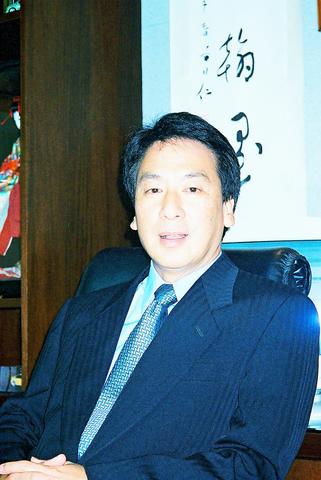
PHOTO: KEVEIN CHEN, TAIPEI TIMES
In the first seven months, sales were roughly 4.7 percent higher than last year's level. I think optimism has beaten caution lately, and my forecast is approximately 360,000 to 370,000 vehicles in sales this year.
Basically, I am quite confident about this year's sales. While the market is still concerned with the US economic recovery and tensions across the Taiwan Strait following President Chen Shui-bian's (陳水扁) recent "one country on each side" remarks, I think the basic fundamentals still look good and a gradual recovery in exports is speeding up the nation's recovery from its worst recession on record last year. That will help increase auto sales throughout the remainder of the year.
TT: Mazda has fared quite well in recent years in terms of sales. What's your sales goal in Taiwan this year and what's the secret to your success in increasing sales?
Hu: When we took over the management of Mazda from a former distribution agent in 1998, they sold 3,280 cars that year, accounting for only 0.7 percent of market share in Taiwan. But we doubled that market share to 1.4 percent in 1999 by selling 6,021 vehicles and continued to fare well in the following years -- taking 2.3 percent share in 2000 on sales of 9,745 vehicles and grabbed a 3.4 percent share in 2001 by selling 11,948 vehicles.
So far we have beaten our objectives in the last seven months, selling about 10,500 Mazda cars, which represents an increase of 30 percent from the same period last year.
Currently we have 14 local sales agents and we are encouraging them to continue upgrading showrooms and service facilities, which should help boost our sales by 34 percent to 16,000 vehicles this year.
There's no single reason why our sales have increased over the last few years, but the main concern for consumers in Tawian is brand image. So as soon as we took over the management of the Mazda brand in 1998, we worked first to rebuild our brand image by promoting Mazda as a brand of "Japanese delicacy" in the market. To achieve this goal, we differentiated ourselves from other Japanese brands by telling consumers our models are genuine imported Japanese cars, not those assembled by Toyota and Honda in Taiwan.
That strategy proved quite successful as for many Taiwanese, ownership of an imported car is more of a "face" and social status issue.
TT: Ford Motors Corp has acquired several brands under its umbrella, including Mazda, and you have shared some auto parts with your parent company in order to save costs. Aren't you concerned that this strategy will affect Mazda's identity?
Hu: Not at all. Honestly, developing a common chassis, platform or sharing some auto parts across brands has become a trend in this industry.
Many major automakers in the world have done so because they have to cut costs as sales drop. So you saw the consolidation between Nissan Motor Co and Renault SA, as well as the tie up between General Motors Corp and Isuzu. Such consolidations have actually helped automakers expand their model lineups and enhance their bargaining power against auto parts suppliers.
Ford currently owns about 33.4 percent of our equities and we are sharing resources in business forecast, treasury, accounting, legal, after sales service and production. It proved to be a substantial cost cut for us.
Though both Mazda and Ford did launch some similar model lineups -- the Mazda 323 Protege sedan is similar to the Ford Tierra sedan and our Premacy 2.0-liter minivan is similar to their MAV model -- Mazda also managed to maintain a separate look from Ford, especially after we heard complaints from customers about the difficulty of telling the difference between the Mazda Tribute and Ford Escape sport-utility vehicles.
TT: Will working together with Ford while keeping your designs distinct put pressure on your parent company?
Hu: In the market we are competing with other brands including Ford, and there will always be some pressure on automakers when your competitors continue to move ahead with rising sales and better styling.
I admit that some in the [Ford] group have said Mazda cars seem to look better than Ford's lineups. But they also realized that Mazda generated incremental sales to the group.
Indeed according to studies conducted by market researcher J.D. Power & Associates, the potential substitution ratio between Mazda and Ford models is less than 15 percent. So I think the conflict between Ford and Mazda is not as big as was expected.
TT: As Mazda has begun to assemble several models locally such as 323 Protege, Tribute and Premacy, do you have plans to make the newly-launched 2.0-liter Mazda 6 sedan in Taiwan?
Hu: Probably not. The Mazda 6 sedan just went on sale in Taiwan on Aug. 23 and we are not clear about sales now. Based on our experience, if sales of any model is below 1,000 vehicles a month, a strategy of local production would eventually fail to bring money in. As for why we were able to produce 323, Tribute and Premacy models locally, the main reason was because Ford also launched similar models at that time -- which created an economy of scale for us.
It's always good business to share resources with a big-volume Ford program.
TT: Japanese consumers are shifting to smaller cars these days in response to the slow economy there. Do you plan to introduce Mazda Demio compact in Taiwan?
Hu: The small car segment is developing quickly in Taiwan, with recently popular models like Formosa Automobile Matiz compact and DaimlerChrysler Smart compact. But I don't think the small car segment will get any stronger in Taiwan from its current market share of around 15 percent.
While some automakers are promoting their small passenger cars for their convenience in urban travel as well as boasting of their safety specifications such as ABS (anti-lock braking system), power steering and airbags, this segment will not become a mainstay in Taiwan.
Indeed we found most first-time car buyers in Taiwan still prefer to buy 1.6-liter to 2.0-liter midsize sedans -- a segment that accounts for the lion's share at about 40 percent.
As for Demio, Mazda just released a new Demio version in Japan recently but has no plans to introduce it in Taiwan in the near future.
After considering many factors such as costs, specifications, prices and customer demand, we don't think Demio is a priority in our model lineup here.
TT: Do you see sales growing disproportionately in some segments within the same market in Taiwan?
Hu: We have seen substantial growth in the segment of recreation vehicles (RV), sport-utility vehicles (SUVs) and multi-purpose vehicles (MPVs) in recent years, taking 25 percent share of Taiwan's market compared to 10 percent in the past.
With companies intending to roll out new models, this segment is expected to take 30 percent share of the market within the next three years. But I have to emphasize that the growth of these type of vehicles comes at the expense of sales of 1.6-liter to 2.0-liter mid-size sedans.
TT: Some automakers are hoping to import cars made in China to Taiwan, as well as leverage their resources on both sides of the Taiwan Strait. What's the rationale behind that consideration?
Hu: I think the main consideration why some automakers want to import cars from China is because of the lower costs.
Actually some say that if we can standardize one single car mold and allow both sides to develop components that complement one another, it will help lower new car development costs for automakers.
Though some had also argued that there's no reason to continue banning the import of cars manufactured in China after both sides are members of the WTO now, cross-strait politics remain a problem that we don't see any sign of being resolved soon.
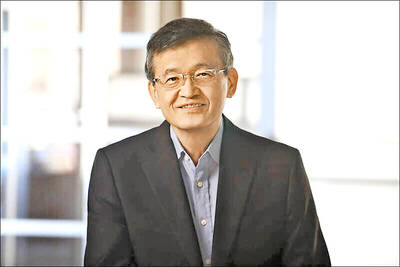
Intel Corp chief executive officer Lip-Bu Tan (陳立武) is expected to meet with Taiwanese suppliers next month in conjunction with the opening of the Computex Taipei trade show, supply chain sources said on Monday. The visit, the first for Tan to Taiwan since assuming his new post last month, would be aimed at enhancing Intel’s ties with suppliers in Taiwan as he attempts to help turn around the struggling US chipmaker, the sources said. Tan is to hold a banquet to celebrate Intel’s 40-year presence in Taiwan before Computex opens on May 20 and invite dozens of Taiwanese suppliers to exchange views
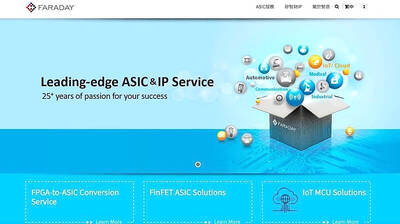
Application-specific integrated circuit designer Faraday Technology Corp (智原) yesterday said that although revenue this quarter would decline 30 percent from last quarter, it retained its full-year forecast of revenue growth of 100 percent. The company attributed the quarterly drop to a slowdown in customers’ production of chips using Faraday’s advanced packaging technology. The company is still confident about its revenue growth this year, given its strong “design-win” — or the projects it won to help customers design their chips, Faraday president Steve Wang (王國雍) told an online earnings conference. “The design-win this year is better than we expected. We believe we will win
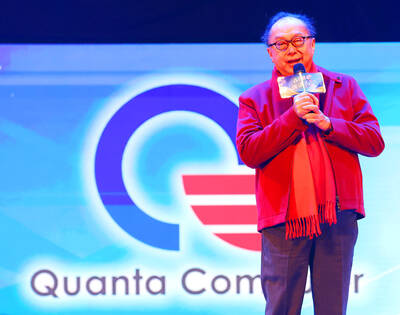
Quanta Computer Inc (廣達) chairman Barry Lam (林百里) is expected to share his views about the artificial intelligence (AI) industry’s prospects during his speech at the company’s 37th anniversary ceremony, as AI servers have become a new growth engine for the equipment manufacturing service provider. Lam’s speech is much anticipated, as Quanta has risen as one of the world’s major AI server suppliers. The company reported a 30 percent year-on-year growth in consolidated revenue to NT$1.41 trillion (US$43.35 billion) last year, thanks to fast-growing demand for servers, especially those with AI capabilities. The company told investors in November last year that
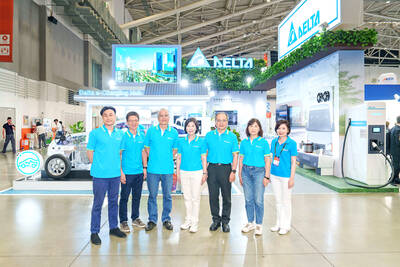
Power supply and electronic components maker Delta Electronics Inc (台達電) yesterday said it plans to ship its new 1 megawatt charging systems for electric trucks and buses in the first half of next year at the earliest. The new charging piles, which deliver up to 1 megawatt of charging power, are designed for heavy-duty electric vehicles, and support a maximum current of 1,500 amperes and output of 1,250 volts, Delta said in a news release. “If everything goes smoothly, we could begin shipping those new charging systems as early as in the first half of next year,” a company official said. The new